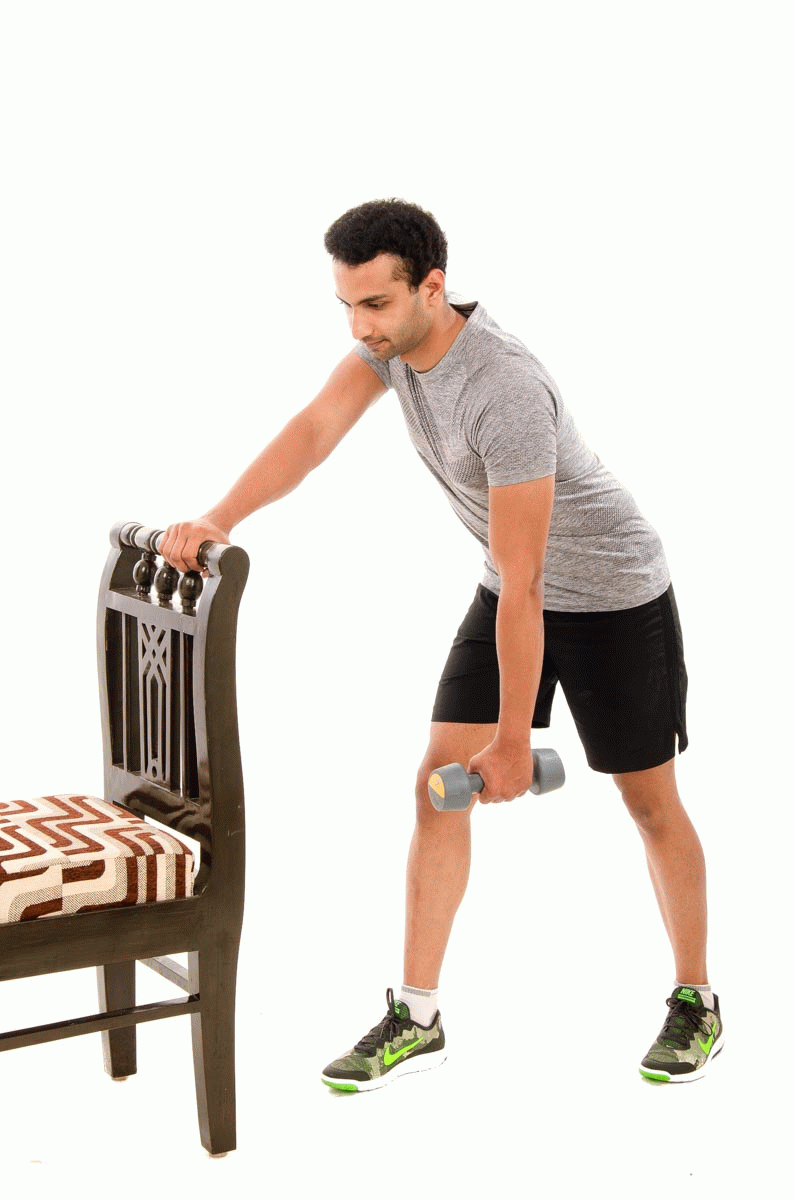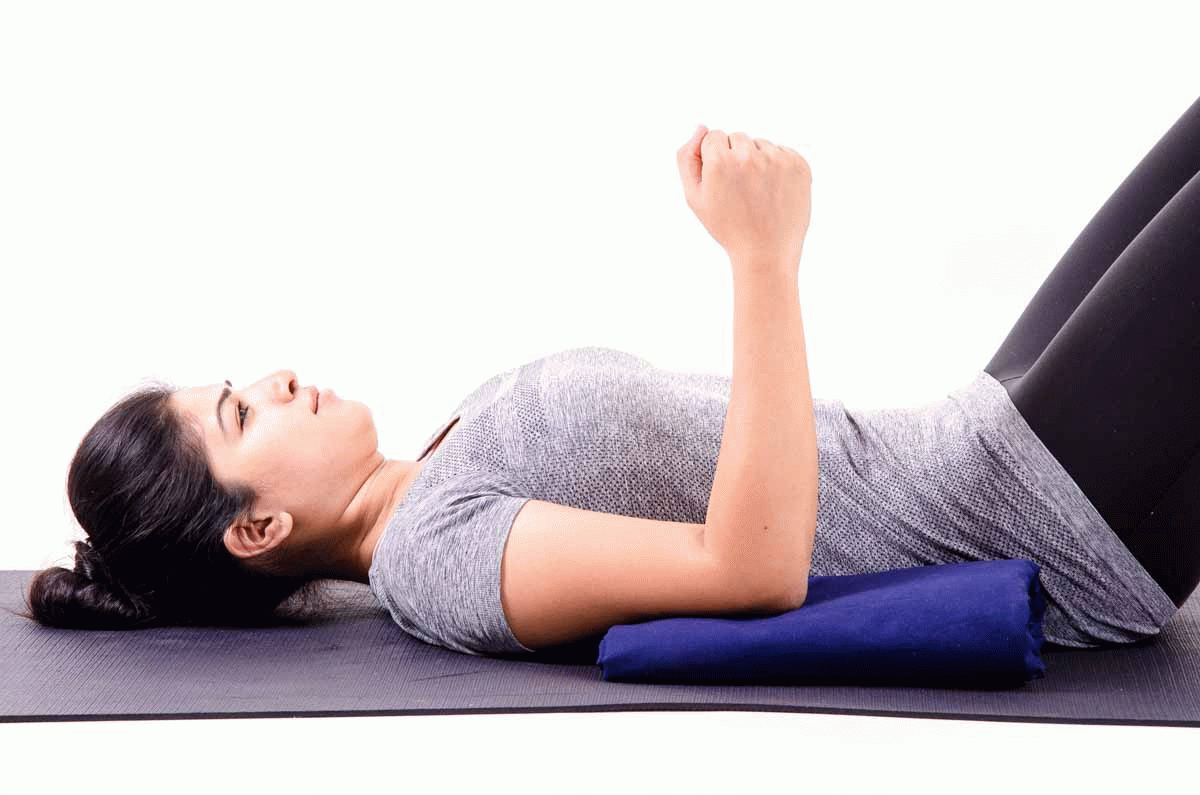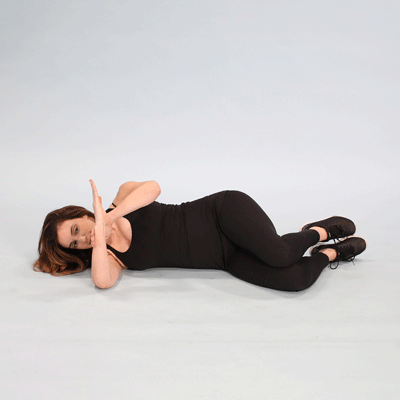The 5 Best Frozen Shoulder Exercises To Help Get Back Your Reach
Frozen shoulder, also known as adhesive capsulitis, is a common condition that causes pain and stiffness in the shoulder joint. It typically affects people between the ages of 40 and 60, however it can also affect people after surgery or those with shoulder injuries. Frozen shoulder can last anywhere from a few months to several years, and it can greatly impact a person's daily activities, especially those that require reaching overhead or behind the back.
One of the most effective treatments for frozen shoulder is exercise. A physical therapist or healthcare professional can recommend certain exercises that can help improve range of motion, reduce pain, and increase flexibility for those with frozen shoulder.
The following are the top five exercises a physical therapist may prescribe for frozen shoulder that can help get back your reach:
1. Pendulums
Pendulums are a gentle exercise that can help to loosen up the shoulder joint and increase shoulder mobility. They are usually one of the first exercises prescribed for frozen shoulder as they are typically well-tolerated and are an effective way to start regaining movement in the shoulder. The low-impact exercise can help gently re-introduce movement to the shoulder.
To perform this exercise:
Stand with your feet shoulder-width apart and lean forward from the waist.
Rest your unaffected arm on a table or chair for support.
Let your affected arm hang down towards the floor and relax. There should be no tension in the shoulder or arm, if possible.
Gently swing your affected arm back and forth in a circular motion, like a pendulum.
After a few repetitions, switch to a side-to-side motion.
The exercise can be adjusted, depending on the goal of the treatment. It's important to remember to keep the movements gentle and avoid any sudden or jerky movements. If there is any discomfort during the exercise, stop immediately and consult the physical therapist.
2. Cross-Body Reach
The cross-body reach is a simple exercise that can help to improve flexibility and increase range of motion in the shoulder. It can help stretch the muscles in your shoulder with the goal to increase length over time. When performed correctly, it can also help to reduce pain and discomfort in the affected area.
To perform this exercise:
Stand up straight with your feet shoulder-width apart.
Gently pull your affected arm across your chest until you feel a stretch. Use your unaffected arm to grasp your affected arm just above the elbow for support.
Hold for several seconds, then return to the starting position.
The physical therapist will usually start with a low dose and increase the duration or number of repetitions as tolerated. It’s important to avoid pulling too hard on the affected arm, as this can cause further pain or injury. If there is any discomfort during the exercise, stop immediately and consult the physical therapist.
3. External Rotations
External rotation is an effective exercise that targets the muscles in the back of the shoulder. As one of the main movements that is lost with frozen shoulder is external rotation, this is an important exercise for regaining strength and movement in the shoulder. The exercise is designed to strengthen the shoulder muscles, which can improve overall stability and reduce the risk of further injury.
To perform this exercise:
Start by standing or sitting in a comfortable position.
Bend the elbow of the affected arm to 90 degrees.
Keep your elbow close to your body and rotate your arm outward.
Hold for a few seconds, then slowly return to the starting position.
The range of this exercise may only be small to start with. However, with time and direction from the physical therapist, there can be a noticeable change in the flexibility of the shoulder. Additionally, the physical therapist may use a light resistance band to start with, and gradually increase the resistance as the strength improves. If there is any discomfort during the exercise, stop immediately and consult the physical therapist.
4. Wall Crawl
The wall crawl is an exercise that can help improve range of motion by gradually increasing the distance that the fingers can crawl up the wall. As the fingers crawl up the wall, the muscles and tendons in the shoulder are stretched and exercised, which can help to increase overall flexibility in the shoulder joint.
To perform this exercise:
Stand facing a wall with your affected arm extended forward and your fingertips touching the wall.
Slowly climb your fingers up the wall without causing pain.
Slowly climb your fingers back down the wall to the starting position.
As this exercise challenges the flexibility of the shoulder, it’s important to move slowly. Avoid climbing too high up the wall, as this can cause further pain or injury. If there is any discomfort during the exercise, stop immediately and consult the physical therapist.
5. Sleeper Stretch
The sleeper stretch is a more advanced exercise for shoulder flexibility. The exercise mainly targets the internal rotation movement, which is commonly restricted by frozen shoulder. Technique is particularly important for this exercise to be effective, so it’s important to follow the instructions of the physical therapist. The physical therapist can also make adjustments and monitor the exercise to ensure it is performed correctly.
To perform this exercise:
Lie on your unaffected side with your affected arm at a 90-degree angle to your body.
Gently lower your affected arm towards the bed in the direction of your feet.
Hold for several seconds, then return to the starting position.
The unaffected arm can be used to gently guide the movement. Avoid pushing too hard on your affected arm, as this can cause further pain or injury.
While there are many benefits of this exercise, when performed incorrectly it may aggravate or irritate the shoulder. As a result, it’s always best to see a physical therapist before starting this exercise. If there is any discomfort during the exercise, stop immediately and consult the physical therapist.
Physical Therapist Can Help Improve Shoulder Health
Physical therapists are experts in musculoskeletal injuries and rehabilitation, such as frozen shoulder. By prescribing certain exercises, it can help improve range of motion, reduce pain, and increase flexibility in the affected shoulder. However, it's important to remember that each person’s experience with frozen shoulder may be different. That is why it’s important to consult a healthcare professional before starting any exercise regimen, especially for those suffering from significant pain or discomfort.
Additionally, an accurate diagnosis is important before starting any treatment. Otherwise, the treatment may aggravate the injury or cause an increase in painful symptoms. The physical therapist will liaise with doctors and other healthcare professionals to ensure a thorough and accurate assessment of the shoulder before beginning any treatment.
Book Now
Find A Local Physio
Frozen shoulder can greatly impact a person's daily activities and quality of life. However, with the help of a healthcare professional like a physical therapist and regular exercise, it is possible to improve range of motion, reduce pain, and increase flexibility in the shoulder. These five exercises are a great starting point a physical therapist may prescribe to those looking to get back their reach and alleviate the symptoms of frozen shoulder.









